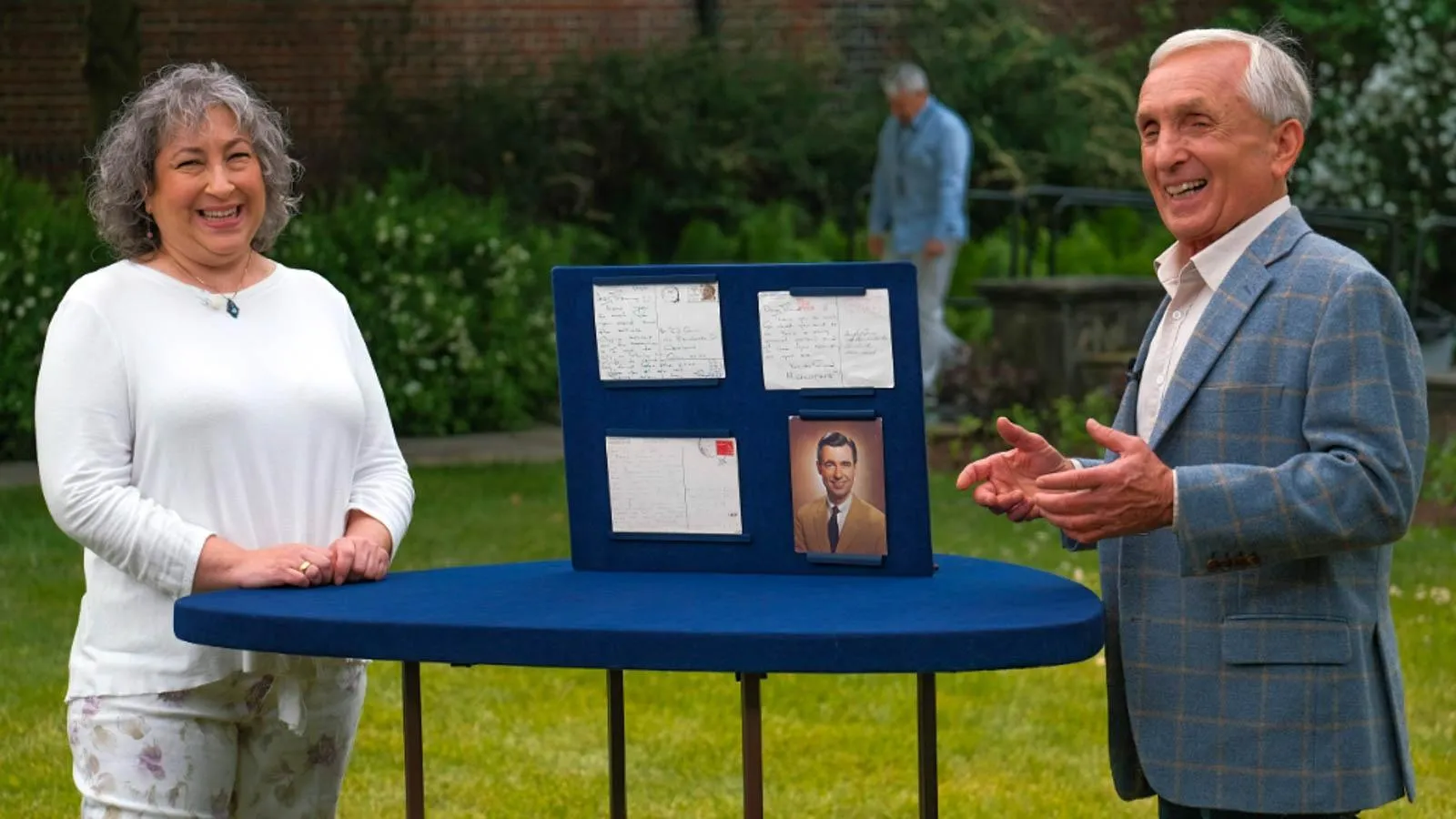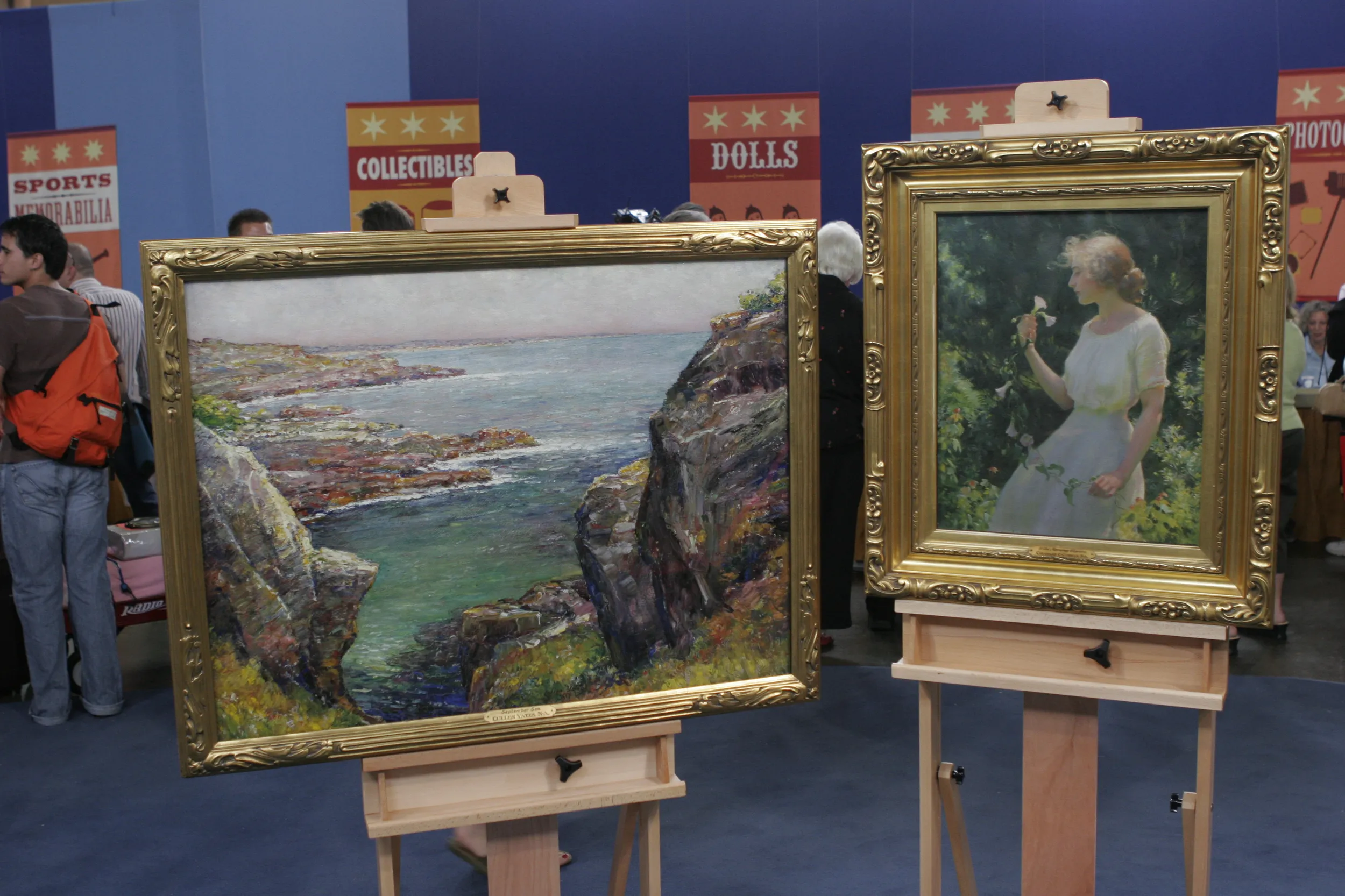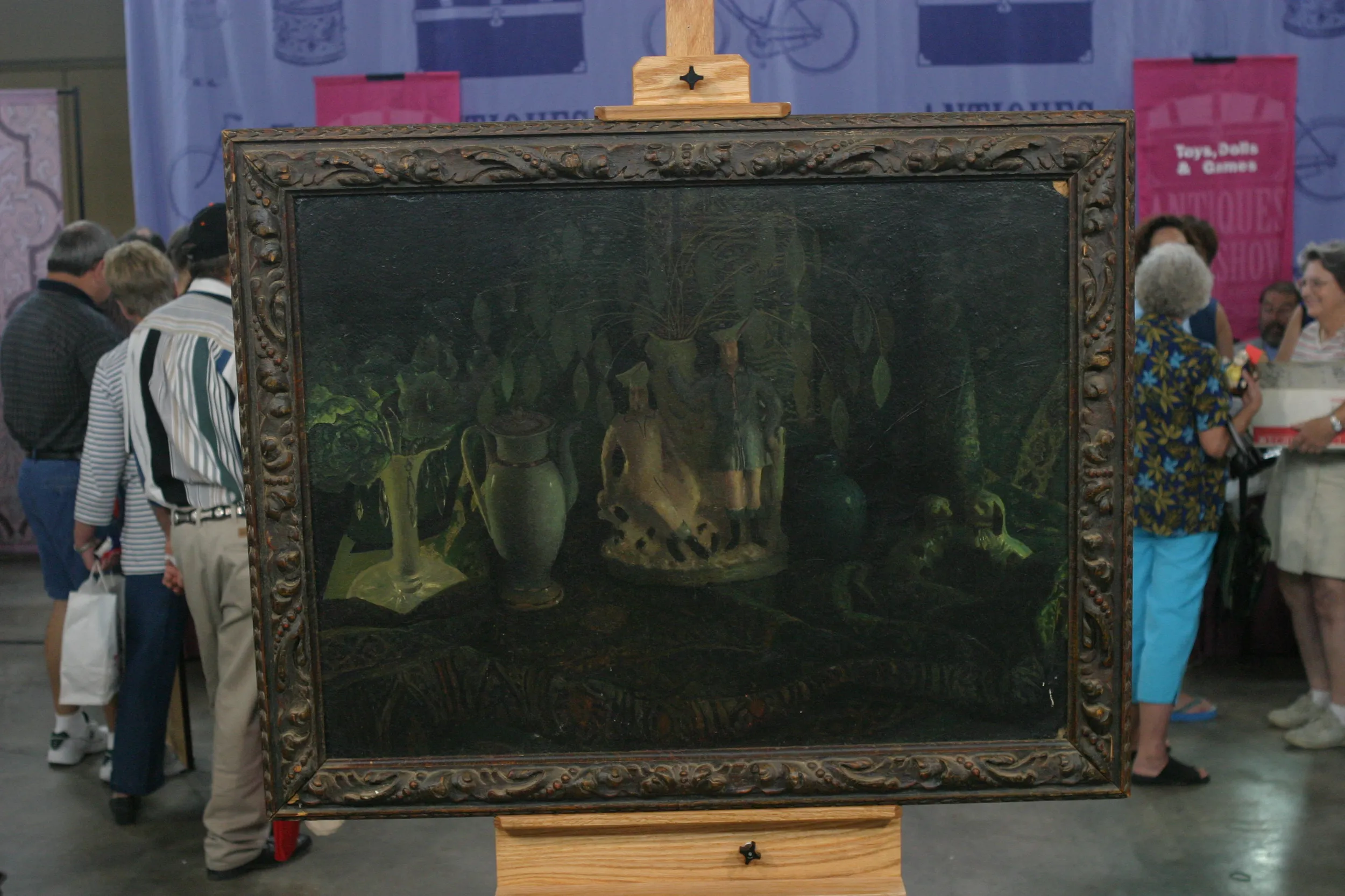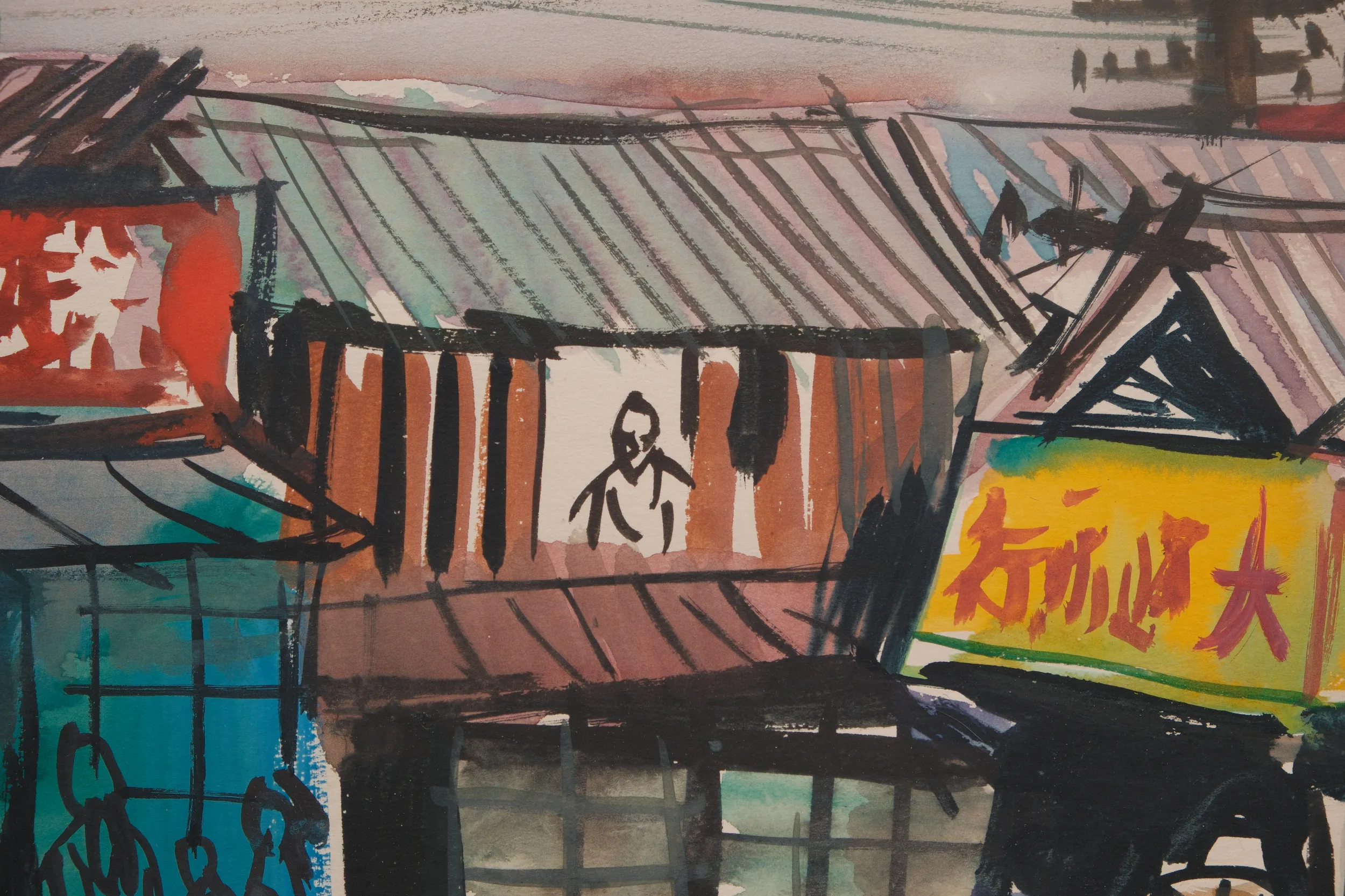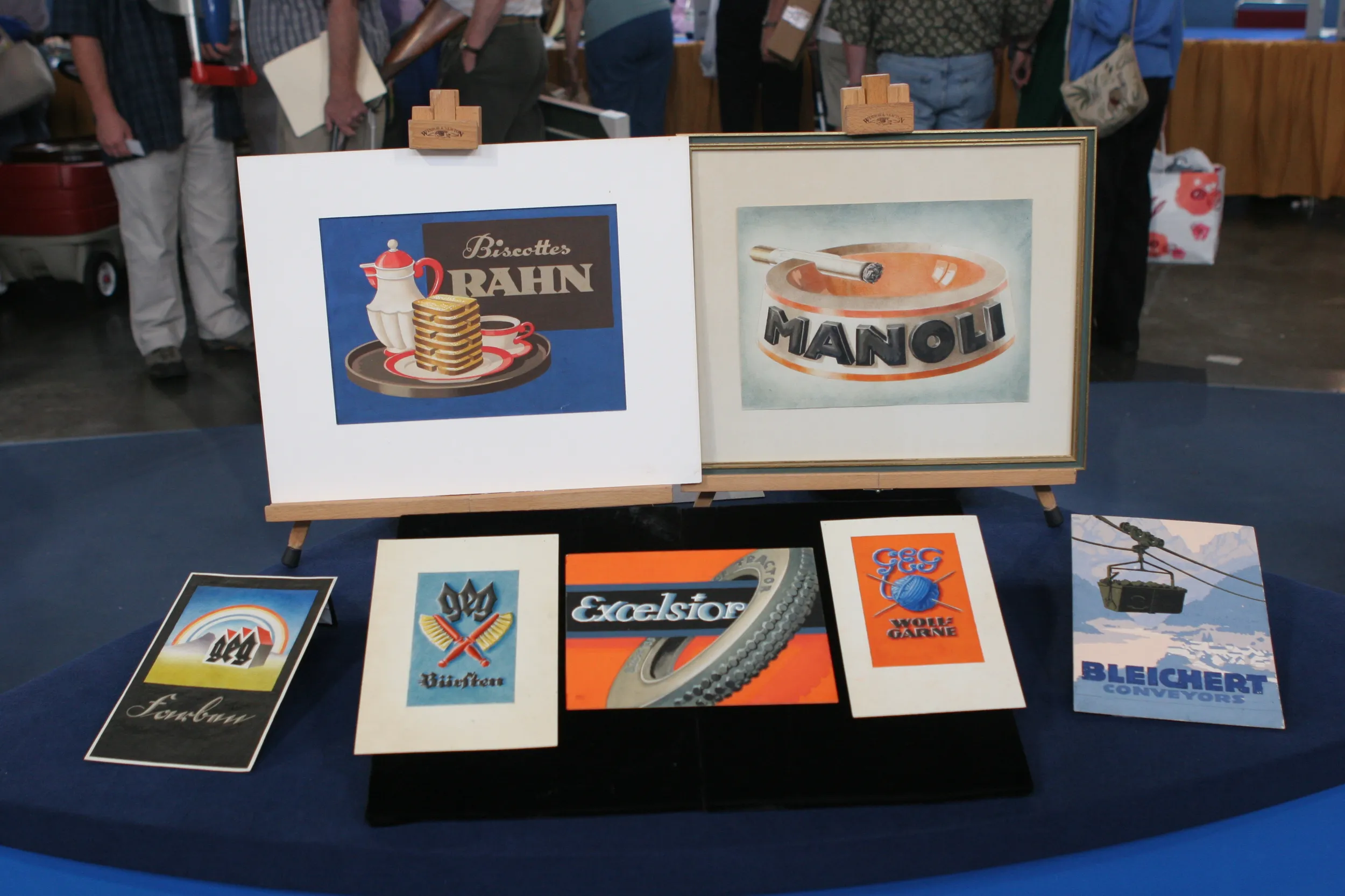GUEST: I brought two paintings from an artist, Shiy De jinn. I got them both from my mother-in-law. I had admired this painting in her house. And when she came down to visit me, she walked in the door and, uh, handed me this roll, and rolled up inside the roll was this painting. And then a number of years later, when she was downsizing, she gave me this painting, also. She worked for the State Department in the '50s and '60s, and right out of college, she was stationed in Taiwan. She actually met the artist, Shiy De jinn, at his studio. She went with a State Department cultural officer, spoke to the artist, and bought these paintings. So this would have been around when this painting was dated. She was in Taiwan in 1956, I do know that. But she was very young and she did not have much money. She was very frugal her entire life.
APPRAISER: Mm-hmm.
GUEST: Um, so I am sure she paid very little for the paintings.
APPRAISER: Let's talk about the artist. He was born in 1923, on the mainland. He was born into a wealthy family. He studied art pretty early on. He ended up studying with Lin Fengmian, who was one of the most important Chinese artists who blended Eastern and Western artistic traditions. So that was a very good artistic pedigree. Then, by 1948, he had already emigrated to Taiwan, and he stayed in Taiwan for the rest of his life. What I see in these paintings are, this, also, blend of Eastern and Western artistic traditions, specifically in the bold line painting, providing more of a structure. But the Western tradition here is in the contrasting colors.
GUEST: Oh, okay.
APPRAISER: He was already being influenced by Matisse and Picasso. The medium is gouache on paper, with some ink, as well. And the fact that it's full of activity, this was a young artist in Taiwan starting a new life. Obviously, this is a Taiwan that's bustling, a new country being formed, really.
GUEST: Yeah.
APPRAISER: And I think he was inspired by that. He ends up capturing a lot, including the, the electrical lines, someone here in the window, all these figures down here on their bicycles. It just has a very kinetic sense. Later in his career, he would paint a lot of portraiture, and then he would go on to paint a lot of landscapes. But they were all very much showing his love for the Taiwanese landscape. So this is someone who fell in love with Taiwan, became one of Taiwan’s treasured artists.
GUEST: Okay.
APPRAISER: His auction records right now are pretty good. Similar pieces to these have sold in the $20,000 to $30,000 range each.
GUEST: Okay.
APPRAISER: So if we were going to put auction values on these, I would put $20,000 to $30,000 on each or $40,000 to $60,000 as a group.
GUEST: Wonderful.
APPRAISER: I would probably insure them at $80,000.
GUEST: Wonderful– thank you so much.

